Disassemble the rear disc brake in the order described in the previous article
Hang up the caliper without disassembling it and secure it with wire
Check if the brake hose is tight.
Release the parking brake lever (or pedal) and remove the rear brake disc.
Disassembly

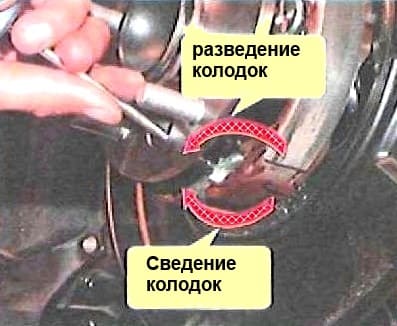
If the brake disc is difficult to remove, turn the adjusting gear until the brake disc turns easily (fig. 1).
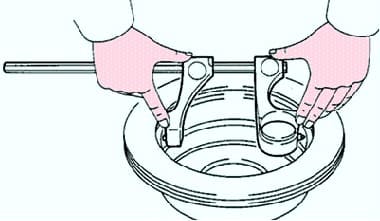
Measure the inner diameter of the brake drum (fig. 3).
If the drum has scratches, mechanical damage or increased wear, then it can be bored to the maximum allowable inner diameter
Standard diameter: 170 mm
Maximum allowed: 171 mm

Release the parking brake shoe return springs (fig. 4)
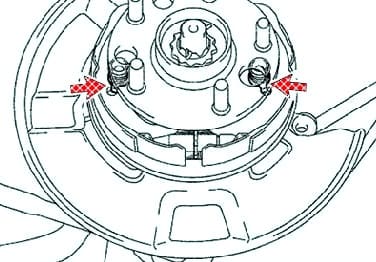
Remove the parking brake pad adjustment screws (fig. 5.)
Remove the spacer plate along with the spring.
Remove the retainer spring, spring seats and retainer.
Disconnect the return spring and remove the front shoe
Pull back the rear shoe.
Remove the return spring from the rear shoe.
Remove the retainer spring, spring seats and retainer.
Disconnect the parking brake cable from the parking brake lever

Remove the lock washer and the parking brake lever (fig. 6).
Check
Check the removed parts for wear, rust, or damage.
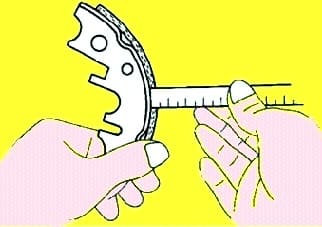
Measure the thickness of the brake pads (fig. 7).
Standard thickness: 2.0 mm
Minimum allowed: 1.0 mm
If the thickness of the pads is less than the minimum or they have uneven wear, replace the brake pads.
If even one brake pad needs to be replaced, the entire set must be replaced.
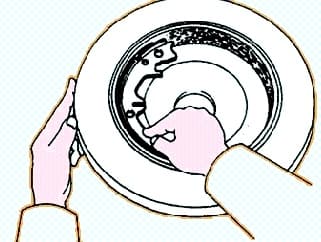
Check the fit of the brake shoe lining to the drum (fig. 8).
If the contact between the working surfaces is poor, either grind the pads or replace the brake pads.
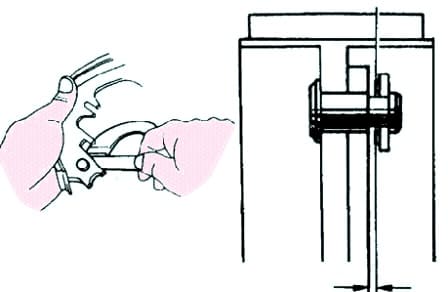
Using a feeler gauge, measure the clearance between the brake shoe and the parking brake lever (fig. 9).
Maximum allowable gap: 0.35 mm.
If the gap is not within specifications, select the correct thickness of the shim according to the data in the table
Assembly
Reassemble in the reverse order of disassembly.
Apply high temperature grease to the parts indicated by the arrow in the assembly drawing.
Adjust the parking brake pad clearance.
Temporarily install the wheel nuts and remove the plug.
Turn the adjuster to spread the pads apart until they block the disc.
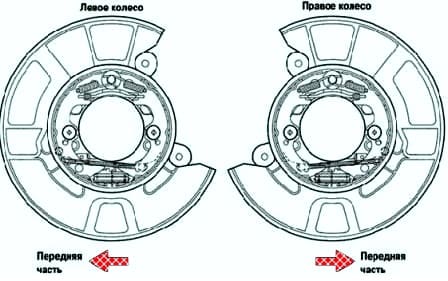
Check that all components are installed correctly (Fig. 10).
While driving the vehicle at low speed on a dry, clean and level road, pull the parking brake lever so that the pads are pressed against the drum.
Make sure the pads are lapped in.
Check and adjust the parking brake lever travel.











